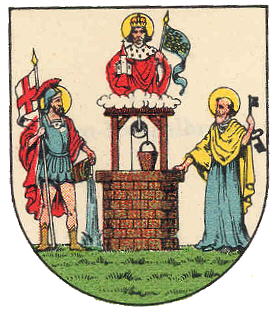Wien-Hungelbrunn: Difference between revisions
Jump to navigation
Jump to search
Knorrepoes (talk | contribs) m (Text replace - "|width="15%"|50 px|right |}" to "|width="15%"|50 px|right |}<seo title="Wappen, Gemeindewappen" />") |
Knorrepoes (talk | contribs) m (Text replace - "|width="15%"|50 px|right |}<seo title="Wappen, Gemeindewappen" />" to "|width="15%"|50 px|right |}<seo title="Wappen von Österreich" />") |
||
| Line 3: | Line 3: | ||
|width="70%" align="center" |'''Heraldry of the World<br>Civic heraldry of [[Austria]] - [[Austria|Österreichische Gemeindewappen]]''' | |width="70%" align="center" |'''Heraldry of the World<br>Civic heraldry of [[Austria]] - [[Austria|Österreichische Gemeindewappen]]''' | ||
|width="15%"|[[File:Austria.jpg|50 px|right]] | |width="15%"|[[File:Austria.jpg|50 px|right]] | ||
|}<seo title="Wappen | |}<seo title="Wappen von Österreich" /> | ||
'''WIEN-HUNGELBRUNN''' | '''WIEN-HUNGELBRUNN''' | ||
Revision as of 12:13, 8 November 2012
| Heraldry of the World Civic heraldry of Austria - Österreichische Gemeindewappen |
WIEN-HUNGELBRUNN
State : Wien (Vienna)
Origin/meaning
The name is a dialect version of a mythical "Hungerbrunn", a "well of famine", denoting a well or fountain, which only carried water in years of famine. This is (or rather, was) a widespread popular belief in Austria. Similar wells, springs or even creeks can be found in many parts of Austria.
The arms show the well, surrounded by the saints Leopold (for Niederösterreich), Florian (as protector against fire and patron saint of St Florian's church in Matzleinsdorf) and Peter.
The region is now part of the 4th municipal district, Wieden.
Literature : Ströhl, 1902; Coffee Hag album, 1930s; http://www.wien.gv.at/bezirke/bezirkswappen/

